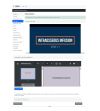Adapting the Gamified Educational Networking Online Learning Management System to Test a Decentralized Simulation-Based Education Model to Instruct Paramedics-in-Training on the Emergency Intraosseous Access and Infusion Skill
- PMID: 38571855
- PMCID: PMC10988548
- DOI: 10.7759/cureus.55493
Adapting the Gamified Educational Networking Online Learning Management System to Test a Decentralized Simulation-Based Education Model to Instruct Paramedics-in-Training on the Emergency Intraosseous Access and Infusion Skill
Abstract
Intraosseous (IO) access and infusion is a safe and rapid alternative to intravenous access in obtaining vascular access for administering fluids and drugs. Healthcare professionals, such as primary and advanced care paramedics, use IO access and infusion in emergency circumstances where peripheral intravenous routes are inaccessible. IO access skills require hands-on training, which can be done remotely if the participants have access to simulation, instructions, guidance, and feedback. For the purpose of moving the training outside of the simulation laboratories, we have developed (1) an inexpensive and scalable three-dimensional (3D) printed and silicone-based advanced adult proximal tibial IO access and infusion simulator and (2) a unique learning management system (LMS) for remote simulation-based training. The LMS was built using the Django platform and supports experiential learning by providing access to educational and instructional content (including virtual simulation and serious games), allowing peers to communicate among themselves and with subject-matter experts, provide and receive feedback asynchronously, and engage in learning using gamification elements. The aim of this technical report is to describe the process of development and the final product of the LMS as a research and educational tool to scaffold remote learning of emergency IO skills by paramedics-in-training.
Keywords: decentralized simulation-based education; emergency medical service; healthcare simulation; intraosseous access; paramedic training.
Copyright © 2024, Jolly et al.
Conflict of interest statement
The authors have declared that no competing interests exist.
Figures




















Similar articles
-
Development of Simple and Advanced Adult Proximal Tibia Simulators for a Decentralized Simulation-Based Education Model to Teach Paramedics-in-Training the Intraosseous Infusion Procedure.Cureus. 2022 Oct 31;14(10):e30929. doi: 10.7759/cureus.30929. eCollection 2022 Oct. Cureus. 2022. PMID: 36465780 Free PMC article.
-
The Development and Initial End-Point User Feedback of a 3D-Printed Adult Proximal Tibia IO Simulator.Cureus. 2022 May 30;14(5):e25481. doi: 10.7759/cureus.25481. eCollection 2022 May. Cureus. 2022. PMID: 35800805 Free PMC article.
-
Hands-On Practice on Sustainable Simulators in the Context of Training for Rural and Remote Practice Through a Fundamental Skills Workshop.Cureus. 2022 Sep 6;14(9):e28840. doi: 10.7759/cureus.28840. eCollection 2022 Sep. Cureus. 2022. PMID: 36225462 Free PMC article.
-
Intraosseous vascular access in critically ill adults--a review of the literature.Nurs Crit Care. 2016 May;21(3):167-77. doi: 10.1111/nicc.12163. Epub 2015 Feb 17. Nurs Crit Care. 2016. PMID: 25688586 Review.
-
Intraosseous access in the prehospital setting: literature review.Prehosp Disaster Med. 2012 Oct;27(5):468-72. doi: 10.1017/S1049023X12001124. Epub 2012 Aug 9. Prehosp Disaster Med. 2012. PMID: 22877834 Review.
Cited by
-
Barriers to utilization of intraosseous vascular access in pediatric emergencies.Clin Exp Emerg Med. 2024 Sep;11(3):309-313. doi: 10.15441/ceem.24.247. Epub 2024 Jul 19. Clin Exp Emerg Med. 2024. PMID: 39026450 Free PMC article. No abstract available.
-
Adoption of network and plan-do-check-action in the international classification of disease 10 coding.World J Clin Cases. 2024 Jul 6;12(19):3734-3743. doi: 10.12998/wjcc.v12.i19.3734. World J Clin Cases. 2024. PMID: 38994277 Free PMC article.
-
Serious game for radiotherapy training.BMC Med Educ. 2024 Apr 26;24(1):463. doi: 10.1186/s12909-024-05430-1. BMC Med Educ. 2024. PMID: 38671374 Free PMC article.
References
-
- Medical student education in the time of COVID-19. Rose S. JAMA. 2020;323:2131–2132. - PubMed
-
- Are we talking about practice? A randomized study comparing simulation-based deliberate practice and mastery learning to self-guided practice. Petrosoniak A, Sherbino J, Beardsley T, et al. CJEM. 2023;25:667–675. - PubMed
LinkOut - more resources
Full Text Sources
